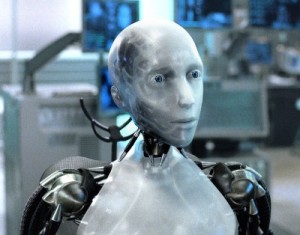Researchers working at Aberstwyth University in Wales have created a robot that has become the first man-made device to independently discover scientific information.
 The “robot scientist” ADAM combines the most advanced robotics hardware with artificial intelligence software. ADAM was tasked with discovering more about the genome of baker’s yeast, a simple microbe often used as a model for studying more complex biological systems.
The “robot scientist” ADAM combines the most advanced robotics hardware with artificial intelligence software. ADAM was tasked with discovering more about the genome of baker’s yeast, a simple microbe often used as a model for studying more complex biological systems.
The robot eventually identified the genes that code for enzymes involved in yeast metabolism-a scientific first for a robot.
The British Science Media Centre wrapped up reaction from experts in robotics and artificial intelligence. For a copy of the research published in Science this week, contact the SMC.
Dr Will Browne, Lecturer in Cybernetics in the School of Systems Engineering at the University of Reading, said:
“Whenever there is a very large search space, such as locating earth-like planets in astronomy, or determining which gene(s) code for an enzyme in bioinformatics, robotics are useful for conducting the thousands of necessary daily experiments. The selection of which experiments to conduct is important as the correct choice maximises the information gained and reduces the associated costs.
“Previously, scientists have set these multiple objectives and decided upon the experiments to conduct: e.g. robotic telescopes to discover new scientific knowledge by conducting experiments autonomously. This novel system is an important advance as the choice of the experiments themselves was automated by multi-objective optimisation artificial intelligence techniques within the robot scientist.
“However, scientists should not fear for their jobs as the subject worth investigating still requires human prescription and many researchers will welcome the autonomous sifting of large quantities of repeating data.”
Duc Pham, Professor of Computer-Controlled Manufacture in the Manufacturing Engineering Centre at Cardiff University, said:
“This is a clever application of robotics and computer software. Robots don’t tire, they can carry out repetitive work accurately, and computers can search through many possibilities very quickly to mine useful information from massive amounts of data.
“There are already many such applications in industry and business – for instance, robots are used in the automotive industry to assemble cars, and computers sift through huge amounts of data about our shopping habits to determine how groceries should be arranged in supermarkets. But a robot doing original science? That really catches the imagination. I would not call this a robot scientist, however; it’s more like a junior lab assistant. It will be a long time before computers can replace human scientists.”